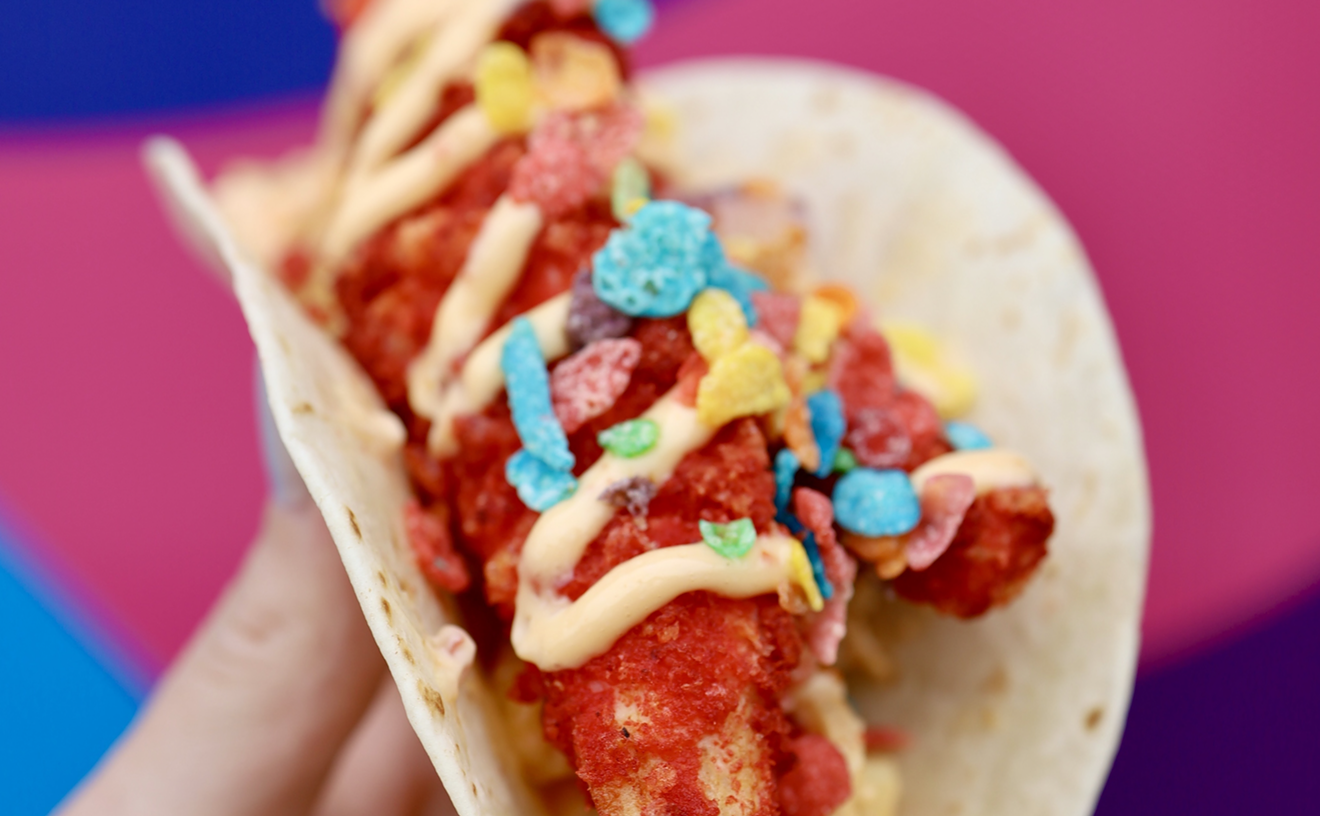As we meditate on what Miami's culinary ecosystem might yield in the coming year, we are at the same time forced to look back at everything it has accomplished in recent years.
Miami developed a bona fide chef community, and the city's best cooks seem to now regularly communicate with one another, participate and enjoy events together, and, most important, accept young cooks from one another's restaurants for brief stages to expand their skills and knowledge. There is a bustling farmers'-market circuit during South Florida's high growing season, and as long as you know where to look, you'll be sure to find someone interesting selling something incredible. Better yet, more and more of that produce is making its way into restaurant kitchens.
There's little doubt Miami made huge strides since the years when Miami Beach dining dominated the headlines, but there's always room for more, and here's some of it.
1. More female chefs in the spotlight. Miami has long separated itself from other cities in that our chief is Michelle Bernstein. A James Beard Award winner, owner of multiple (though now-shuttered) restaurants, and a widely known culinary personality, Bernstein broke the old boys' club mold that dominates dining in so many other cities.
Even today, there is an array of female chefs and cooks — Dena Marino at MC Kitchen, Nicole Votano at the Wynwood Yard, Eileen Andrade at Finka Table & Tap — who remind us the best food doesn't come from a gruff, white-toqued, Escoffier-style chef with a big mouth and bigger attitude. But in light of the allegations of sexual harassment that have emerged from every corner of American society, it's clear that all kinds of organizations need to take women in the workplace seriously. That means equal treatment and equal pay. But it also means we in the media need to strive harder to find the women who are making a difference. Email us.

At Sanguich de Miami, everything except the cheese is made in-house, as the good Lord intended.
Zachary Fagenson
Nevertheless, it was the old standbys that persisted. And after many years, chefs are figuring out ways to make them better than ever. Just look at the Cuban sandwiches coming out of Calle Ocho's Sanguich de Miami, or the bits of flair Michael Beltran puts on his plates at Ariete in Coconut Grove. Eileen Andrade has become the darling of West Miami-Dade with her food, a culmination of growing up in a Miami restaurant dynasty while also fostering a passion for Peruvian and Korean flavors. Even as Miami becomes a more diverse city in terms of the Spanish-speaking origins of its residents, we hope all of these developments will create a foundation for even more improvement.
3. More daily menus. At some Miami restaurants, it's like Christmas every day. You go because you never know what's being served. Places such as Deme Lomas and Karina Iglesias' Niu Kitchen and Arson might be offering the monstrous shrimp called carabineros flown in from Spain. North Miami Beach's Yakko-San might have monkfish liver or fried chrysanthemum blossoms. In Coral Gables, an entire wall of Su-Shin Izakaya is a chalkboard with an ever-changing list of delights that keep regulars returning year after year. More, please.
4. More traditional Asian cuisine. Across Miami-Dade, traditional Chinese restaurants have been popping up, divulging some of the secrets of one of the world's great culinary cultures.
CY Chinese Restaurant opened in North Miami Beach, bringing ultraspicy, fragrant, Chongqing-style hot pot. Chinese Guy, in far West Dade, shows us the cuisine of Tianjin, in China's north. At Phuc Yea in the MiMo District, Aniece Meinhold and Cesar Zapata provide Vietnamese cuisine with their own French and Gulf Coast flair, while Brickell's Da Tang Unique seems to offer a rotating look at Chinese cuisine. Though we lost Wynwood's Cake Thai, the original on Biscayne Boulevard remains, and we hope to see other locations soon.
5. More specialty shops. Recent years have brought a number of specialty food retailers to Miami. Think Sunset Harbour's True Loaf, Wynwood's Zak the Baker and Miami Shores' Proper Sausages. But more is always better. More cheese shops, more fish markets, and more butchers are what the city needs. The sausage queen of Miami, Babe Froman, is opening a butcher shop in Southwest Miami-Dade, and the wares of New York City bread king Jim Lahey's Miami bakery, Sullivan Street, have begun to make their way around town.
Such projects give depth and range to eating in Miami. They provide restaurants with a true marketplace of purveyors from which to fill their pantry and home cooks with options beyond the antiseptic, shrink-wrapped world of supermarkets.
6. Continued restaurant growth in South and West Miami-Dade. For too long, South Beach was the main gravitational force in Miami's restaurant world. In recent years, it has expanded to downtown and along the Biscayne Boulevard corridor. Yet those in the know have long realized the best eating in Miami is available farther away.
In Downtown Dadeland, Niven Patel's Ghee, Jorgie Ramos' Barley, and the Brick are showing everyone the possibilities of Kendall. In Doral, Dragonfly Izakaya is excelling with pristine yakitori and unexpected dishes such as savory chawanmushi with ikura and uni. That city also boasts hidden gems such as Mi Lindo Ecuador and its stunning caldo de salchicha, as well as Las Mercedes Restaurant, with its hybrid Nicaraguan and Cuban menu and a weekend barbecue that overwhelms even the most devout carnivores. Go west, young people!
7. The opening of all predicted food halls. The opening of Wynwood's Asian food hall, 1-800-Lucky, was as much a delight, with its roast duck, ramen, maki, and bánh mì sandwiches, as it was a kind of blow-off valve for the nonstop chatter about upcoming food halls that has inundated eaters over the past year.
More than a half-dozen are in the works, and it's hoped that next year, Miamians will be able to enjoy New Orleans-bred St. Roch Market in the Design District, the Citadel in Little River, Time Out Market in South Beach, and La Centrale in Brickell City Centre. Miami loves to browse, brunch, and booze, and the openings of these sprawling food temples are highly anticipated.
8. More Brazilian restaurants. New Times' 2017 Best of Miami issue listed the downtown restaurant Camila's as offering the city's best buffet, and for good reason. An array of rice dishes, meats, and salads changes throughout the week. There is also a small enclave of Brazilian restaurants in the area of Surfside and Sunny Isles Beach. Yet in spite of all the economic stories about Miami's unbreakable bonds with Brazil, the country has yet to infiltrate the Magic City in all its glorious diversity. What do they eat in the central state of Mato Grosso, in the north in Amapá, and between São Paulo and Rio in the area of Minas Gerais? Churrasco, feijoada, and pão de queijo are delicious, but there must be more.



















